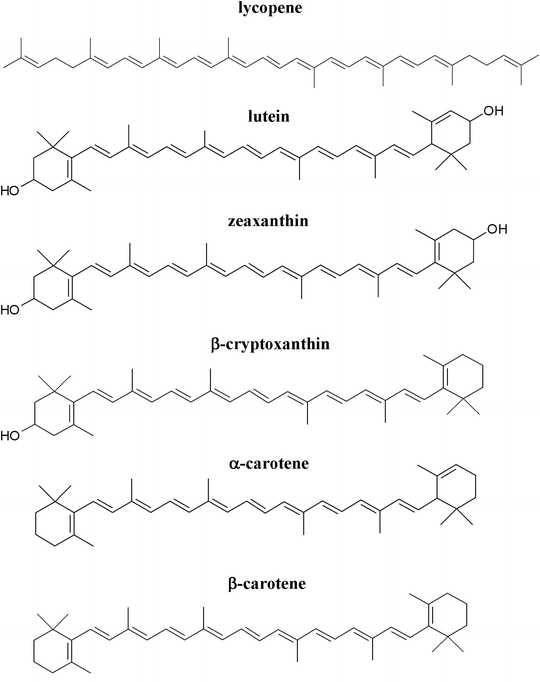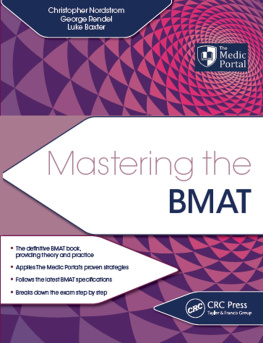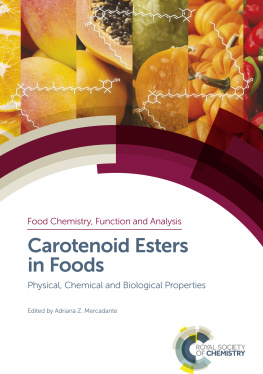Tanumihardjo - Carotenoids and Human Health
Here you can read online Tanumihardjo - Carotenoids and Human Health full text of the book (entire story) in english for free. Download pdf and epub, get meaning, cover and reviews about this ebook. City: Totowa;NJ;New York, year: 2013, publisher: Humana Press;Springer, genre: Children. Description of the work, (preface) as well as reviews are available. Best literature library LitArk.com created for fans of good reading and offers a wide selection of genres:
Romance novel
Science fiction
Adventure
Detective
Science
History
Home and family
Prose
Art
Politics
Computer
Non-fiction
Religion
Business
Children
Humor
Choose a favorite category and find really read worthwhile books. Enjoy immersion in the world of imagination, feel the emotions of the characters or learn something new for yourself, make an fascinating discovery.
- Book:Carotenoids and Human Health
- Author:
- Publisher:Humana Press;Springer
- Genre:
- Year:2013
- City:Totowa;NJ;New York
- Rating:5 / 5
- Favourites:Add to favourites
- Your mark:
- 100
- 1
- 2
- 3
- 4
- 5
Carotenoids and Human Health: summary, description and annotation
We offer to read an annotation, description, summary or preface (depends on what the author of the book "Carotenoids and Human Health" wrote himself). If you haven't found the necessary information about the book — write in the comments, we will try to find it.
Carotenoids and Human Health — read online for free the complete book (whole text) full work
Below is the text of the book, divided by pages. System saving the place of the last page read, allows you to conveniently read the book "Carotenoids and Human Health" online for free, without having to search again every time where you left off. Put a bookmark, and you can go to the page where you finished reading at any time.
Font size:
Interval:
Bookmark:
Carotenoid Sources and Metabolism
- Carotenoids are a class of ubiquitous yellow, orange, and red pigments found in nature and regarded as major contributors to the purported health benefits of a diet rich in fruits and vegetables. They are an important source of vitamin A in many diets and may protect from development of degenerative diseases such as macular degeneration, cancer, and heart disease.
- Carotenoids vary greatly among foods; and their concentration is influenced by many factors, including genetics, climate, maturity, cultivation practices, and processing and storage methods.
- Quantification of carotenoids in foods is complicated by their inherent variability and instability. Nonetheless, several databases list the representative carotenoid content of foods to use to better understand dietary carotenoid intake of individuals and populations.
- This chapter serves as an overview of food sources of carotenoids, sources of variation in food carotenoids, and the effects of food processing and preparation on carotenoid stability.

Font size:
Interval:
Bookmark:
Similar books «Carotenoids and Human Health»
Look at similar books to Carotenoids and Human Health. We have selected literature similar in name and meaning in the hope of providing readers with more options to find new, interesting, not yet read works.
Discussion, reviews of the book Carotenoids and Human Health and just readers' own opinions. Leave your comments, write what you think about the work, its meaning or the main characters. Specify what exactly you liked and what you didn't like, and why you think so.










